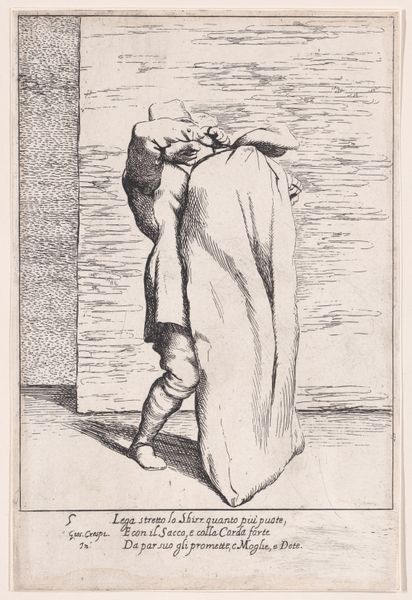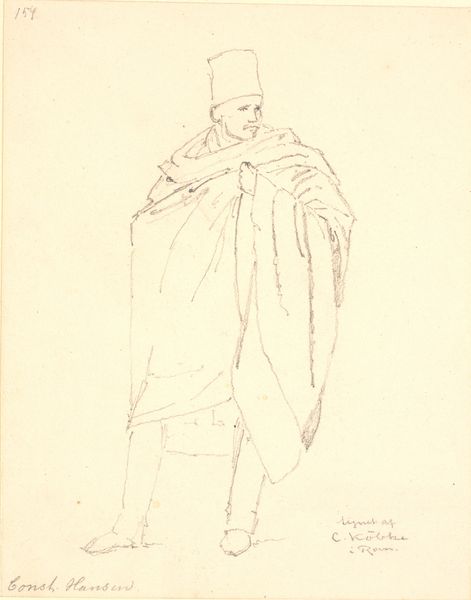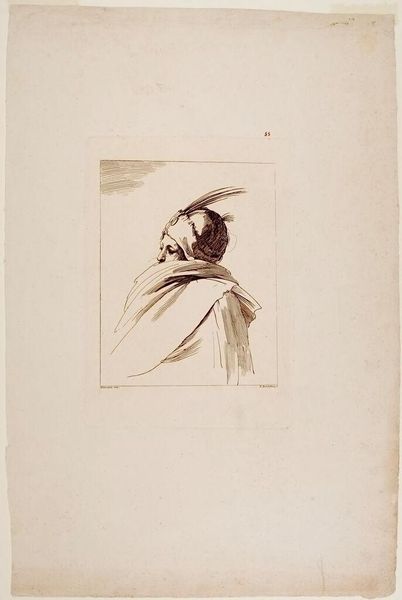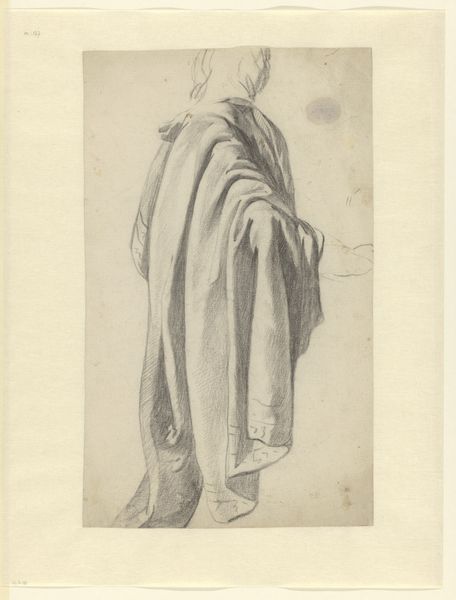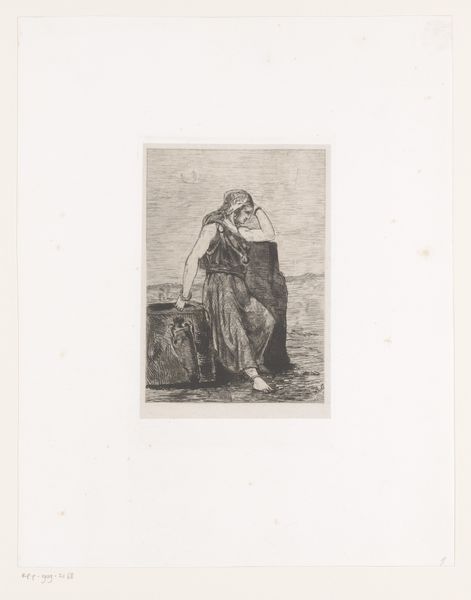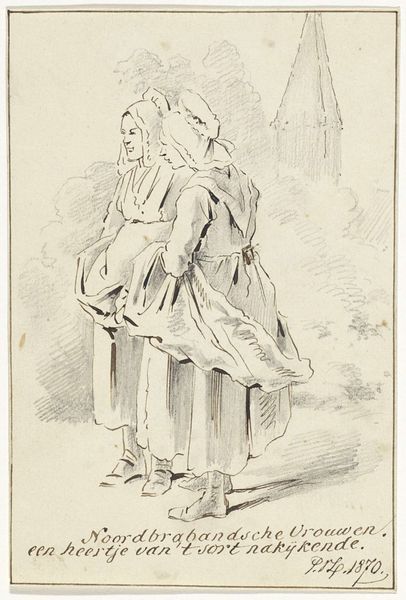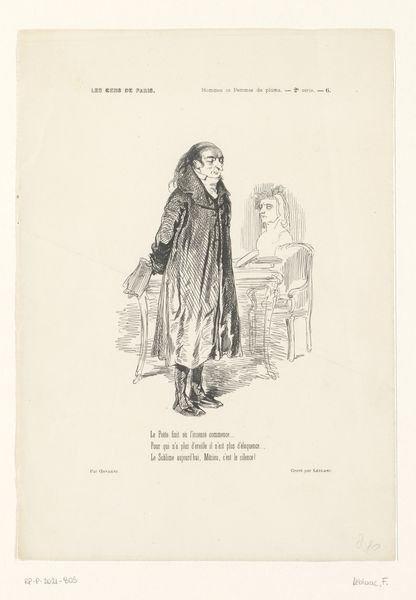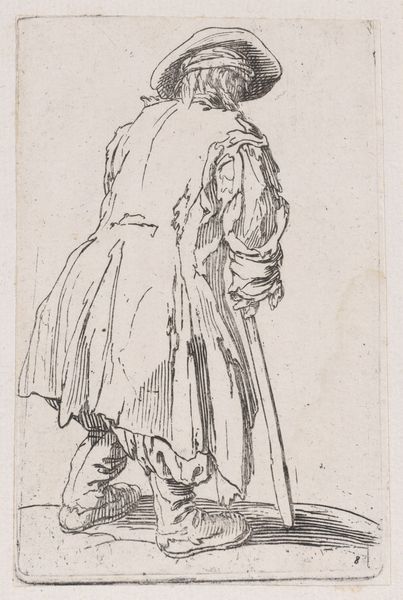
Dimensions: height 245 mm, width 170 mm
Copyright: Rijks Museum: Open Domain
Giovanni David created this print of a Venetian merchant around 1770, using etching. Etching is an intaglio printmaking process, where the artist covers a metal plate with a waxy, acid-resistant substance, then scratches an image into that coating. When the plate is dipped in acid, the exposed lines are eaten away, leaving an image that can be inked and printed. Here, the etched lines define the form of the merchant, his draped clothing, and the city behind him. Notice how the material of the print – the ink, the paper – gives the image a tactile quality. The etching technique, with its fine lines, lends itself well to capturing the textures of fabric and the details of the architecture. David was not only an artist but also a merchant himself, dealing in prints and drawings. This print, therefore, isn't just a depiction of Venetian commerce; it is a product of it. The circulation of prints like these fuelled the economy of art, making images accessible to a broader public. It reminds us that art-making is always embedded in social and economic conditions.
Comments
No comments
Be the first to comment and join the conversation on the ultimate creative platform.
